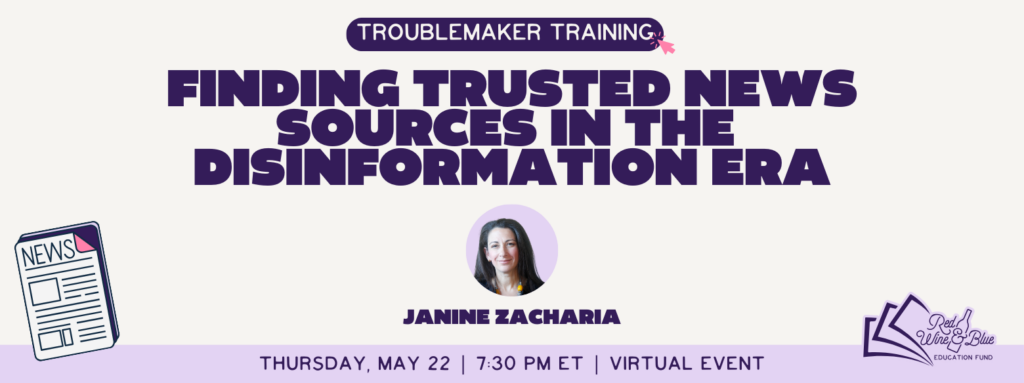
Hi there! Welcome to Easy A–Your go-to source for quick and easy actions you can take in five minutes or less about the issues you care about.
Are you a busy mom? Or maybe your work is so hectic you can’t think about anything else during the day? A lot of us are also taking care of parents or other loved ones too, leaving little time for anything else.
The good news is that these are things you can do while you’re waiting in the school pick up line, on your lunch break, or even at your kid’s soccer practice – anywhere you happen to be! And you can easily share Easy A with your friends so they can be in the know, too! We’ll send you a new action to take every week–just one, we promise –and it will always be something you can do in five minutes or less. Ready to get started? Let’s go!
Read This: Dear 2026
The end of 2025 is in sight, and for a lot of us, that is cause for celebration!
The year started with the inauguration of the Trump administration, and from day one, they took actions that harmed average Americans. From dismantling the Department of Education, to enacting tariffs that raised the prices of our everyday goods, to shutting down diversity and inclusion efforts everywhere, to snatching our neighbors right out of their homes and workplaces – they made much of 2025 a total dumpster fire.
So maybe you’re celebrating the END of this painful year, but believe it or not, there are also some good things that happened. We want to celebrate those, too.
It would’ve been easy to give up in January and just try to get by, but we refused. Instead, we started the year with our historian friends Heather Cox Richardson and Timothy Snyder who inspired us to not give in to extremism, and to go local to protect democracy instead. In doing so, we accomplished some pretty amazing things:
- Our membership grew by over 190,000 people!
- TroubleNation exploded to more than 800 local groups!
- We launched our new RWB App and more than 29,000 of you are already using it!
- We celebrated incredible election wins in November that set the stage for an even better 2026.
So if we take away one main lesson from 2025, it’s that if we stick together, hold onto hope and joy, and keep going, we can do great things!
Now we’re kicking off our most fun and forward-looking year-end celebration ever, and for the next few weeks, we want you to join us!
We’re not just saying “good riddance” to a year filled with mostly crappy things, we’re celebrating how we turned it around and have lots to look forward to in 2026.
A new year offers us endless possibilities. We’re taking this time to reflect and plan, and that’s where our Dear 2026 campaign comes in. We’re writing letters to our future selves, celebrating the work of intrepid women with our first ever Troubbies awards, and donating to support more women’s democracy-saving work next year.
But to kick things off, we’re starting with a little fun. We designed this special deck of tarot cards to give you some insight into what your 2026 with Red Wine & Blue holds. Give the deck a shuffle, pull the card you’re most drawn to, and see what special message you receive for 2026.
Then, if you have a little extra time, click here to head on over to our Dear 2026 campaign page to learn about the rest of our year-end celebrations and our intentions for an amazing year ahead. And feel free to share with friends!
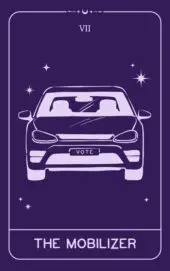
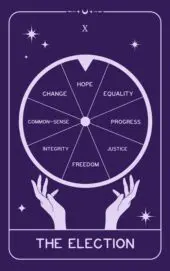
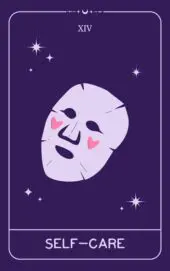
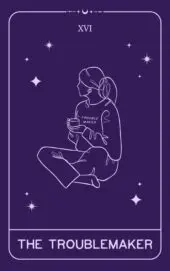
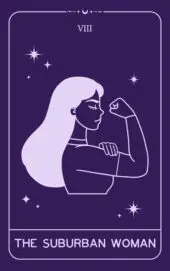
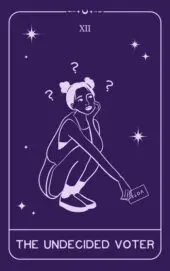
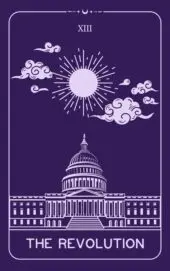
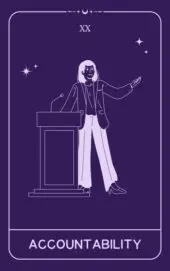
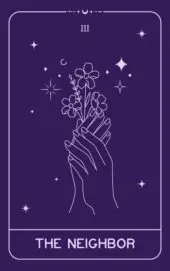

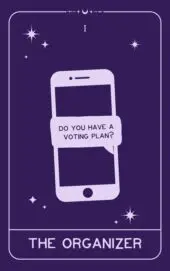
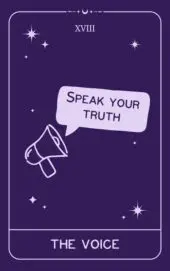
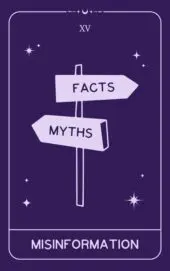
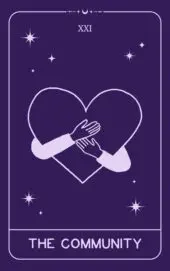
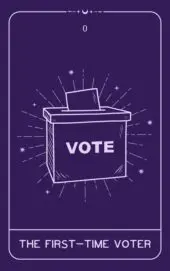
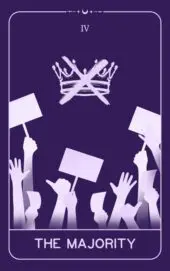
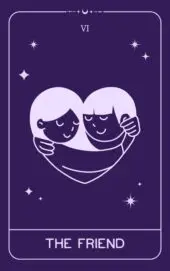
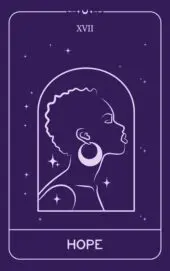



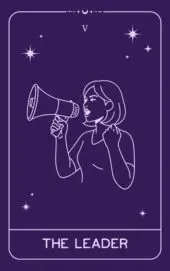
*Note, this is all for fun and entertainment! We aren’t tarot experts and we can’t predict the future, but we know one thing’s for sure – we’ll keep fighting extremism in 2026 and we want you with us!
Watch This: The Climate Crisis Is a Health Crisis
We’re not doomed yet, but we’ve wasted a lot of time. That’s one of the takeaways we learned from meteorologist and climate change communicator, Chris Edwards, when he joined us recently for our virtual event, Climate Change 101: What You Need to Know.
Chris talked about the science behind climate change and how it affects us all. One of the impacts he discussed echoed what Dr. Alice Chen wrote in your Easy A last week — the climate crisis is also a crisis for our health. Watch what he had to say about the impact of climate change on our health in this short video:
Climate change doesn’t just hurt our bodies, it also hurts the health of animals and ecosystems.
Chris showed us that climate change is simple, serious, and solvable — if we act soon. Next week, we’ll take action together.
If you want to earn extra credit this week, you can watch the full Climate Change 101: What You Need to Know event with Chris here.
Read This: The Climate Crisis Is a Health Crisis
Thank you to our guest author this week, Dr. Alice Chen! Learn more about Dr. Chen below and follow her on Bluesky here.
When I was a kid, summers meant riding our bikes around the neighborhood, lazing around outside watching clouds and ladybugs, and generally relaxing and recharging. Today, our summers are filled with suffocating heat waves, choking wildfire smoke, and more hurricanes and floods destroying entire communities.
Last week, we saw the heartbreaking consequences in Texas. Extreme flooding has left hundreds dead or missing, including dozens of children and counselors from a girls’ summer camp.
Our climate is changing fast, and it has quickly become a crisis that threatens the health and well-being of our children and our communities. Last summer broke heat records that had just been broken by the summer of 2023. From 2004 to 2021, heat-related deaths increased by a factor of 4. Extreme heat is the deadliest weather-related hazard.
We are at a high-stakes crossroads where we have a real but narrow opportunity to build a better future and avoid the most catastrophic outcomes of the climate crisis. As a doctor and a mother of two kids in elementary school, I am constantly reminded of why climate action is so important. As hot days increase, I worry about my spunky kids wilting and lying with their eyes closed on the couch as they suffer from a dehydration headache. I worry about my family in the Bay Area and Miami where worsening drought, wildfires, hurricanes, and floods threaten the homes where my husband and I grew up.
My colleagues and I are spreading the word about the health impacts of extreme heat and worsened air quality that follows. We are reminding people to hydrate, get in the shade or somewhere cool, and watch for signs that your body is not handling heat well – headaches, nausea, extreme sweating, lethargy.
We are asking people to check in with community members who are at higher risk because they are outdoor workers, student athletes, people in neighborhoods with few trees or no air conditioning, pregnant, older, very young, or if they have medical conditions that put them at risk like heart disease, lung disease, kidney disease, diabetes, high blood pressure, mental health conditions, disabilities, and autoimmune diseases. It doesn’t take much — just a quick text, call, or knock on your neighbor’s door.
Beyond heat risks, we are raising the alarm that climate change is increasing wildfire smoke, smog and pollen in the air — increasing the risk of asthma and affecting childhood brain and lung development.
Here’s the good news:
We are not helpless, nor should we be hopeless. We made a lot of progress over the last few years, after Congress passed historic climate legislation that sparked a boom in clean energy growth.
It was a win-win, showing we don’t have to choose between protecting our families and revitalizing the economy. Those investments helped generate over 400,000 clean energy jobs and produce cheaper energy — all while reducing toxic pollution that sends people to our hospitals with asthma, heart attacks, strokes, and lung cancer. In my own household, we have cleaner air because we’ve been able to switch away from our gas stove and say goodbye to the gas station, too. The investments sparked a clean energy boom that won’t be stopped.
Here’s the bad news:
In the Republican budget bill signed last week, Trump rolled back the clean energy tax credits that drove so much progress. The bill also slashes money for weather forecasts that save lives in climate disasters. And it threatens our kids’ health — gutting clean air and water programs, then ripping Medicaid away from millions of families.
If you’re outraged, you are not alone.
Trump’s bill is more unpopular than any major legislation passed since 1990. Days after signing it, Trump’s approval rating has plummeted. When people learn what’s in the bill, they hate it.
There are three ways we can protect our health, air, water, and climate:
- Organize in our communities to help people understand the link between fossil fuels, climate change, and our health.
- Accelerate our transition to clean energy by taking advantage of tax credits before they expire at the hands of Congress.
- Show up. As families feel the effects of the Republican budget, they need to know that Trump and his allies in Congress are responsible.
In congressional offices, town halls, social media, and our communities, we can show lawmakers — and our neighbors — that we won’t be silent when our kids are in danger. We can demand action to protect our families from climate threats.
I know it matters. In 2009, I co-founded a physician advocacy group called Doctors For America, and after decades of failed efforts to pass healthcare reform, we helped get it across the finish line by elevating the stories of real people and what they needed to protect their health.
We can do it again.
 Alice Chen is a licensed MD and public health advocate. She was a founding board member and Executive Director of Doctors for America — a grassroots organization of physicians and medical students in all 50 states who push for policies that improve the lives of their patients.
Alice Chen is a licensed MD and public health advocate. She was a founding board member and Executive Director of Doctors for America — a grassroots organization of physicians and medical students in all 50 states who push for policies that improve the lives of their patients.
Do This: Celebrate the Fourth of July with Red Wine & Blue
It’s a long holiday weekend, which means many of us have even less free time than usual. So our Easy A is simple this week — invite your friends and family to join you in the Red Wine & Blue community!
As we celebrate America’s 249th birthday, we’re all worried about the state of our democracy. It’s fragile and facing some serious threats, but it’s worth fighting for. The most patriotic thing we can do is celebrate the freedom and justice that America stands for and bring more people into our fight against extremism. Share this post on your social media today.
Have a safe and joyful Fourth of July!
Do This: Show Up for the Trans Community
This year alone, legislators have considered more than 900 bills in 49 states which target the rights of transgender people. These bills try to tell trans kids and adults which bathrooms to use, take away their healthcare, keep them from playing sports, and keep schools from recognizing their existence. And this is in addition to all the federal actions that are doing the same things.
So as Pride Month comes to a close, we will keep leading with heart, not hate. We support the entire LGBTQ+ community and will keep showing up for the trans community as these threats against them increase.
Join us and earn your Easy A this week by downloading our resource, Showing Up For The Trans Community.
This resource gives you tips on how to show your support locally and how to talk about it with family and friends. When extremists go low, we go local, and we can show up for our trans friends and neighbors where they need us most — right at home.
Watch This: Supporting the Transgender Community
Extremist politicians have been stepping up their efforts to demonize transgender people and take away their rights. Through new laws, lawsuits, and executive orders, they are denying the existence of trans people and trying to keep them from living full and happy lives.
We can’t sit back and let this happen. While many American companies are pulling back their support for Pride Month this year, Red Wine & Blue is doing the opposite. Our members and TroubleNation groups are celebrating Pride nationwide. And earlier this year, on March 31, we also recognized Transgender Day of Visibility. Watch our one minute video from that day here:
We will continue to fight for trans rights, even after June ends! Next week, we’ll have another action you can take to support trans people in your community.
Read This: Supporting the Transgender Community
June is Pride Month, a time to celebrate the LGBTQ+ community and advocate for their rights.*
This year, supporting the transgender community and advocating for their rights is especially urgent. That’s because the Trump administration has launched a series of executive orders and other actions that take away trans people’s rights and try to erase their very existence.
Here’s how:
- One of the very first executive orders Trump announced — on his inauguration day! — orders the federal government to only recognize two sexes, “biological males” and “biological females.” It also removes all previous federal guidance that recognized and supported non-binary and transgender people. This means that government-issued IDs like U.S. passports and records like tax and social security forms won’t recognize all genders. And federal prisons will have to house prisoners based on only two sexes, putting non-binary and transgender prisoners at risk of physical harassment and assault.
- A similar executive order restricts what schools can teach about the LGBTQ+ community and requires public schools to only recognize two sexes. It bans schools from recognizing transgender students by their preferred names or pronouns and actually threatens to withhold public funding from schools that support students in this way. It also threatens the prosecution of teachers and school administrators who don’t comply.
- Also impacting schools, a separate executive order bans transgender athletes from playing on girls’ and women’s sports teams, rather than leaving this decision up to state and local organizations. This order goes beyond schools, seeking to pressure independent national and international athletic organizations — including the Olympics — into adopting the same policy. Not only does this take away opportunities for trans girls, but it subjects all girls and women to the possibility of unnecessary and invasive physical examinations.
- Another executive order bans transgender people from serving in the U.S. military. After it was announced, Defense Secretary Pete Hegseth directed the military to stop providing healthcare for transgender service members. Both actions are being challenged in federal courts, but for now, the military can ban the enlistment of transgender people and discharge thousands of active service members.
- A separate executive order restricts access to healthcare for transgender children and teens, even in states where it is specifically protected by state law. It misrepresents the guidelines and standards of gender-affirming care recognized by the medical community and takes away the freedom of kids and families to make their own healthcare decisions. The U.S. Supreme Court is expected to rule soon on a case, U.S. v. Skrmetti, which will decide if the U.S. Constitution protects healthcare for transgender kids.
- The U.S. Supreme Court has also agreed to hear Chiles v. Salazar, which could overturn a ban on “conversion therapy” in Colorado. This discredited practice tries to force LGBTQ+ people into being straight. All major medical and psychological associations have proven that it does nothing but cause serious harm. If the court overturns the ban and allows “conversion therapy” in Colorado, it would set the precedent to overturn similar bans that exist in 20 other states.
The bottom line is that these policies are trying to push trans people out of our communities and deny their existence.
To make matters worse, these political attacks have led to an increase in suicide risk among LGBTQ+ kids and teens, and Trump has proposed to cut federal funding for the life-saving 988 Suicide & Crisis Lifeline. This hotline helps thousands of kids a month — more than 1.2 million since it started in 2022.
It’s up to all of us to stand up in support of the transgender community. As less than 1% of the U.S. population, they cannot fight this fight alone, but they are 1.6 million people whose health, safety, and happiness matters. Pride Month is a great time to take action, and in the coming weeks, we’ll show you how!
*If you have more time this week, you can read last year’s Easy A posts that dig deeper into the history of Pride Month.
Do This: Empower Your Friends to Help Protect our Reproductive Rights
We’ve spent the last two weeks learning about the ongoing threats to our reproductive freedom. These threats are particularly dangerous because extremists are intentionally trying to keep them under the radar. We’re not gonna let that happen!
We’ve just added a great new resource to our website called, “We Decide, Not Politicians.” It explains all the stuff we’ve shared with you here and teaches how to fight back!
There’s something here for anyone who’s ever needed, or thought about needing, any sort of reproductive healthcare. From birth control to IVF to miscarriage management to abortion care, we’re talking about all of it.
Use one of these easy, premade social media posts to share this information with your friends and family right now. Together we can shine a light on what these extremists are doing and make sure they stop taking away our reproductive rights. We decide what’s best for us and our families, not politicians or extremists!
Watch This: The New Attacks on our Reproductive Rights
Last week, we learned about the new ways that extremists are coming for our reproductive rights.
We know that they have a plan to take away the abortion pill everywhere, even in states where abortion is legal. We also know that they’re testing a variety of state and local bills across the country to see what they can pass under the radar.
Jessica Valenti, author of the newsletter Abortion, Every Day, joined us for an event recently to talk about these attacks and what we can do to stop them. Watch this short video from that event in which she told us the most important thing we can all be doing right now to protect our reproductive rights in the face of these attacks.
The fall of Roe v. Wade in 2022 put our access to abortion care in the hands of state and local leaders. This created a patchwork of laws and varying levels of access to safe and basic reproductive healthcare, all just depending on where we happen to live. It’s scary and confusing for a lot of us, but we have a lot of power locally.
By subscribing to Easy A, you’re already taking Jessica’s advice to stay informed! Next week we’ll continue to be inspired by Jessica and take one more action to protect our reproductive freedom.
And if you have a little extra time this week, you can watch our full event with Jessica here on our YouTube channel!
Read This: The New Attacks on our Reproductive Rights
The majority — 63% — of abortions in the U.S. are performed using medication, not surgery.
The FDA-approved drug mifepristone is one of the main pills used in medication abortions. Its safety has been proven for decades through more than 100 studies. It’s safer than Tylenol, Penicillin, and Viagra!
But Health and Human Services Secretary Robert F. Kennedy, Jr. just announced that the FDA will take on a new safety review of mifepristone.
Why? Because a partisan group affiliated with Project 2025 just produced a biased, non-scientific report that questions mifepristone’s safety. Project 2025 wants the FDA to reverse its approval of mifepristone and ban medication abortion nationwide. This is their first step towards making that happen.
But here’s the thing — this is not what most Americans want!
81% of Americans believe that the decision to get an abortion should be between a woman and her doctor, not the government. And support for legal abortion has increased even more since the U.S. Supreme Court issued their 2022 decision in Dobbs v. Jackson Women’s Health Organization, taking away our reproductive rights.
The media covered the immediate fallout of Dobbs, as 21 states swiftly banned abortion, but we haven’t heard much more about the state of reproductive healthcare lately. Unfortunately, as this RFK, Jr. announcement shows, we are all facing a new wave of threats to our reproductive rights.
These threats aren’t just at the federal level. Anti-abortion extremists are also trying to pass misleading state and local bills that are going underreported. Here are some examples:
- “Clean water” surveillance bills that would require the monitoring of wastewater for evidence of birth control, abortion medication, and hormone therapies. They claim it’s to ensure the safety of drinking water, but really they just want to detect where people are using these forms of healthcare.
- “Child protection” and “trafficking” bills that penalize anyone who helps young people get abortion care. In states with abortion bans, these laws call it illegal trafficking if you help a young patient get abortion care in another state. These bills are meant to chill community support, keeping us too scared to help the young people in our lives.
- “Baby Olivia” bills that require public schools to include an anti-abortion video called “Meet Baby Olivia” (or similar content) in their science or sex education classes. According to doctors and scientists, the video has biased and unscientific information.
- Bills that require collecting medical data on abortion procedures and providers and making that data public. This would enable anti-abortion extremists to identify doctors and sue them — or worse.
- “Equal protection” or “fetal personhood” bills that criminalize having an abortion or discarding IVF embryos. This means patients or doctors could be charged with homicide.
Extremists are testing these sneaky bills at state and local levels to see what will go unnoticed and get passed into law. If they can get them passed in one state, they’ll try in many more.
So what do we do in the face of these new threats to our reproductive freedom? We don’t let their tricks go unnoticed! We stay informed so we can spot these types of bills if and when they come to our lawmakers. Then we can work to stop them.
We can also make sure that the people in our community know that we are trusted sources of information and support. We won’t let these threats stop us from helping our community. We’ll share more specific actions we can take to protect our reproductive rights in the weeks ahead.
Do This: Spotting and Stopping Disinformation
Disinformation is everywhere, from social media posts to blogs to online influencers. It works because it’s convincing and easy to share quickly.
Disinformation is not just pervasive and persuasive, it’s also persistent! That means we need to create routine, online habits that help us recognize disinformation when we see it. Small actions whenever we are scrolling — like pausing before sharing something to check its source and make sure that it is true — are the best way to stop disinformation in its tracks. This week’s Easy A action will help you learn how to do this.
Janine is going to teach us how to spot trustworthy news online. Even if you can’t make it to the live virtual event on May 22 at 7:30pm ET, take just a moment to sign up for it now, and we’ll email you the recording after the event so that you can watch it in your own time.
Facts matter now more than ever. Janine will show us how this all plays a role in protecting our democracy, so we really hope you’ll join us!

